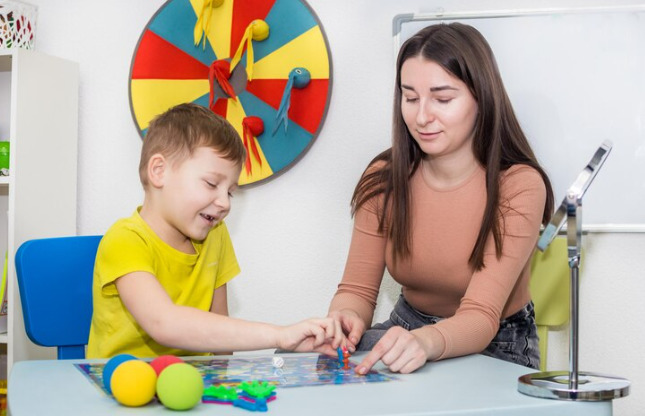
Children with autism spectrum disorder – or even a suspected diagnosis – can significantly benefit from early intervention by virtue of evidence-based practices (EBPs). According to The National Professional Development Center on Autism Spectrum Disorder, ‘An evidence-based practice is an instructional/intervention procedure or set of procedures for which researchers have provided an acceptable level of research that shows the practice produces positive outcomes for children, youth, and/or adults with ASD.’
Moreover, recent research by the Frank Porter Graham Child Development Institute, in association with the National Professional Development Center on ASD, identified 27 evidence-based practices. These interventions were found to be effective for children, supported via exhaustive scientific research and analysis. In our previous blog, we discussed the top seven evidence-based treatments effective for ASD as well as the integral role of ABA in autism treatment.
And now, let’s take a closer look at the next 20 evidence-based practices with demonstrated efficacy in the field of ASD therapy and treatment –
Visual Supports – Visual supports target numerous adaptive behavior skills, such as task engagement, transitions across activities, independent performance, and enhanced response chain length. Visual supports have also proven effective in augmenting skills across areas, like social initiation, the demonstration of play skills, and social interaction skills.
Time Delay – Time delay, effective for pre-schoolers to young adults (19-22 years) with ASD, can be used effectively to address communication, behavior, social, joint attention, play, school-readiness, cognitive, academic, adaptive, and motor skills.
Task Analysis – Task analysis (TA) entails breaking a chained or complex behavioral ability into smaller components to inculcate a skill. As per evidence-based studies, this intervention can be used to address social, joint attention, self-help, motor, communication, and academic skills.
Structured Play Groups – Structured play groups (SPG) are interventions that include small groups to teach a broad range of outcomes. This intervention is effective for elementary school-age learners between 6-11 years with autism.
Social Narratives – Social narratives are aimed at helping learners adjust to routine changes and adapt based on social as well as physical cues. Moreover, this EBP can also be used to teach specific social behaviors and skill sets.
Picture Exchange Communication System (PECS) – Primarily used to teach learners to communicate in a social context, during PECS, learners are initially taught to give a picture of a desired item to a communicative partner in exchange for the item.
Video Modeling – Video modeling (VM) is a method of instruction that utilizes display equipment and video recording in order to offer a visual model of the targeted skill or behavior.
Self-Management – As an intervention package that teaches children to independently regulate their behavior, self-management helps teach children to discriminate between inappropriate as well as appropriate behaviors. It also helps learners accurately record and monitor their own behaviors and reinforce themselves for behaving in a suitable manner.
Reinforcement – Mainly utilized to teach new skills while enhancing behavior, reinforcement helps establish the relationship between the learner’s behavior or use of skill as well as the consequence of the same.
Social Skills Training – The majority of social skills training intervention meetings include role-playing or practice, instruction on basic concepts, and feedback. This approach helps learners acquire as well as practice communication and social skills, thereby encouraging positive interactions with peers
Prompting – Prompting procedures include verbal, physical, or gestural assistance provided to children in order to help them acquire or engage in a targeted behavior or skill.
Scripting – Scripting (SC) involves the presentation of a written and/or verbal description of a particular situation, serving as a model for the child. The primary basis of SC is to help learners on the autism spectrum anticipate what may occur during a given activity, thus improving their ability to participate in the same.
Parent-Implemented Intervention – Parent-implemented intervention (PII) involves programs in which parents are tasked with carrying out some (or all) of the interventions with their child. In this approach, parents are trained by professionals to teach new skills in group formats or one-on-one in a community or home setting.
Differential Reinforcement – Differential reinforcement of alternative, incompatible, or other behavior (DRA/I/O) aims to teach new skills. This approach helps lessen the incidence of undesirable behavior, such as tantrums, self-injury, stereotypic behavior, and aggression.
Naturalistic Intervention – Naturalistic intervention (NI) is a collection of practices based on applied behavior analysis (ABA) principles. These practices are designed to encourage specific target behaviors based on the child’s core interests by establishing more complex skills that are not only appropriate to the interaction but also naturally reinforcing.
Modeling – Often combined with other strategies like reinforcement and prompting, modeling includes the demonstration of a desired target behavior, resulting in imitation and subsequent acquisition of the imitated behavior.
Extinction – Extinction (EXT), a strategy based on applied behavior analysis (ABA), is used to reduce or eliminate challenging behavior. This intervention has been effective for pre-schoolers (3-5 years) to high school-age learners (15-18 years) on the autism spectrum.
Exercise – Exercise (ECE) is a strategy that includes a rise in physical exertion as a means of increasing appropriate behavior or minimizing problem behaviors. This approach also helps improve physical fitness as well as motor skills.
Discrete Trial Teaching – Discrete trial teaching (DTT) is characterized as a one-to-one instructional approach used to teach skills in a controlled, planned, as well as systematic manner.
Functional Communication Training – Functional communication training (FCT) is a systematic practice that aims to replace subtle communicative acts or inappropriate behavior with more appropriate as well as effective communication skills and behaviors.
With the autism spectrum being so incredibly diverse, there is an ever-growing need for efficient treatment methods. And in this regard, intervention science continues to play a pivotal role in offering evidence that ascertains whether therapies and practices are effective in providing the best possible results.
And at Early Autism Services (EAS), our board-certified behavior analysts are thoroughly trained in applying evidence-based treatments for autism, evaluating treatment strategies, and effectively conducting behavioral assessments. So, if you’re ready to provide your little one with the best autism care in Bengaluru, contact us right away by requesting a free consultation.






Recent Comments